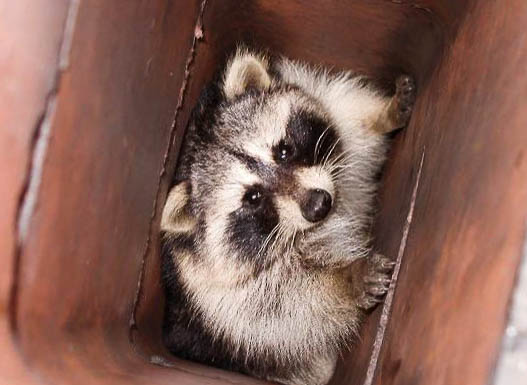About Rats
Appearance
Rats (Rattus) are small mammals that belong to the family Rodentia similar to squirrels and mice. They are generally medium sized, with long, thin, and hairless tails. While people often mistake them for mice, rats are larger and longer, with larger ears, bigger eyes, and longer legs.
Although people use the name ‘rat’ as a common name for most mouse-looking rodents, the typical rats belong to the genus Rattus. Examples of “typical” rats are the black rat (Rattus rattus) and brown rat (Rattus norvegicus).
Rats can range in size, from the Osgood Vietnamese 5-7 in. (12 to 17 cm), to the Bosavi Woolly rat, about the size of a cat with a length of 32.2 in. (82cm) with a weight of 3.3 lbs. (1.5kg). The size of a rat varies depending on their over 60 species.
Rats can have varying colors of fur like black or brown and visible whiskers. They also have teeth that continue to grow throughout their lifetime.

Behavior
Rats are mostly nocturnal animals, though some are active both day and night. They will stick together in packs and operate from a base. Rats form new packs when a ‘free’ buck and doe set out from previous ones to an un-colonized region. The biggest rat often leads the pack.
Rats can swim, climb walls and structures, and scurry at good speeds to escape predators. They will also squeak (high pitch for the ears) if distressed, hurt, or annoyed. Rats are omnivorous creatures and are opportunistic scavengers. They mostly depend on human settlements/actions for food. They will eat anything edible and prefer meat if they can help it. They eat grain, seeds, berries, fruits, vegetables, and other foods found in human store. Most rats will also kill small birds, insects, fish, and other smaller animals for food.
Rats also show certain levels of intelligence and highly developed smell senses. They are also easy to train to perform various tasks in research labs. Hence the word “lab rats.” Rats, like most mammals, give birth to their young ones alive, and most times, the mother is usually left to fend for the pups alone.
Habitat
Rats are found in almost all regions of the world apart from Antarctica. Their unique biological structure, adaptability, and dependency on humans for survival makes sure of that.
Although some live in the wild like forests, woodlands, and so on, several of them live around humans. Rats can inhabit anywhere as far as it is warm and is close to a food source. Examples of such places are; sewage tanks, holes in walls, crevices, old buildings, man-made holes, and so on. However, during the reproduction season, some of them make their own burrows.

Life Cycle
Rats are known for their incredulous rate of reproduction; most female rats mate as much as 500 times within 6 hours. And brown rats can produce up to 2,000 offspring per year, with an average of 9 pups per litter. They are born helpless, hairless, and blind.
They have a gestation period of 3-4 weeks, and by the age of 3 months, the rat is ready to reproduce/form its pack. Rats generally have a lifespan of around 2 to 3 years, depending on the species, as some species can live for 5 years. Rats have lots of predators and are usually casualties of accidents/”face-offs” with humans. Some common predators of rats are cats, hawks, snakes, bats, foxes, and other carnivorous animals.
Damages They Cause
Rats are one of the rodents that will always invade or reside in human settlements. It makes them one of the greatest pests to man.
Carriers of bacteria and disease
Due to rats’ close habitation with humans, they are the source of some of the deadliest viruses, bacteria, and diseases (bubonic plague, typhus, Lassa fever) that have affected and killed people. Infected rats can transmit disease through bites or contaminating human foods.

Damage to Utilities
Squirrels have large teeth and can chew through electric wires, cables, and other lines passing through the house, causing power outages, electrical damage, or water leaks.
Destruction of properties
Like other rodents, their foraging for food allows them to chew on almost anything. If they invade your settlement, they can destroy your books, clothes, food, wood, plastic, and any other thing through constant chewing.
Damage to food
Rats have a well-developed sense of smell and can track down storages/barns and chew through thin barriers. Once they discover food, they will menacingly devour and desecrate the area and stores. They can also scatter your trash, eat your pet’s food, and uncovered foods.
Damage to utilities
Rats in your ceiling, attic, underground, or any other place will chew on wires, power cables, and other utilities. There are cases of electric accidents due to the actions of rats.












